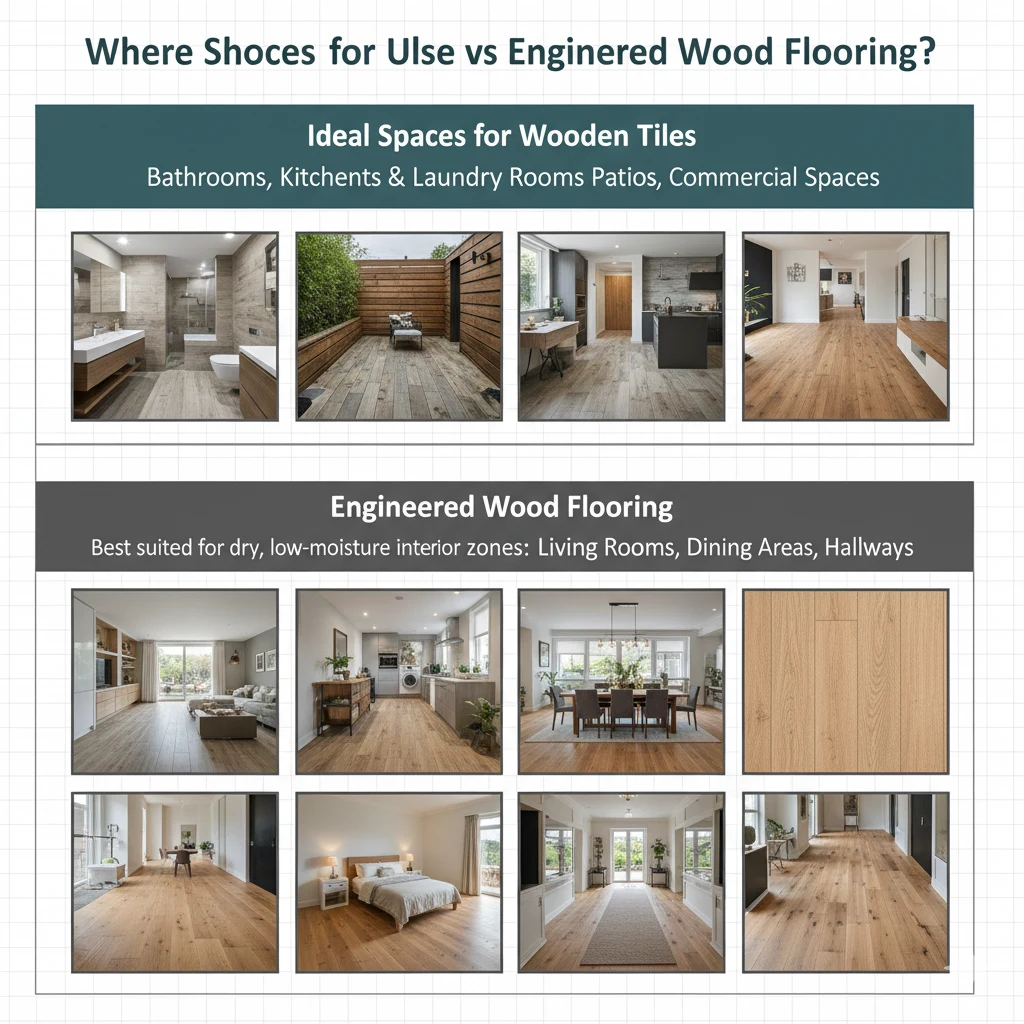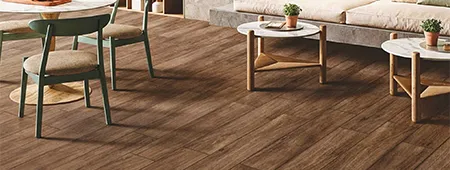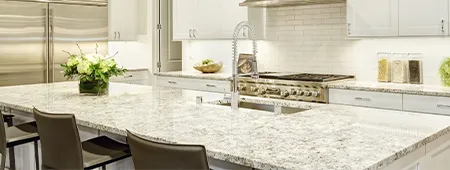08 November, 2025
The natural warmth and timeless elegance of wood-inspired floors have become a staple in modern home design. But when it comes to achieving that perfect wooden aesthetic, homeowners often face a common dilemma should you choose Wooden Tiles or Engineered Wood Flooring?
Both options beautifully replicate the charm of natural wood but differ in composition, performance, and practicality. Whether you’re renovating your home or designing a new space, understanding the strengths of each will help you make an informed decision.
In this blog, we’ll explore what makes Wooden Tiles and Engineered Wood Flooring unique, how they differ, and which option best suits your lifestyle and space.
What Are Wooden Tiles?
Understanding Wood Look Tiles and Their Appeal
Wooden Tiles, also known as wood look tiles, are porcelain or ceramic tiles designed to mimic the natural beauty of timber. Thanks to advanced digital printing technology, these tiles feature lifelike wood grain patterns, textures, and even knots, giving them the rich appearance of real wood.
Manufactured under high-temperature firing, wooden tiles are exceptionally durable and resistant to moisture. They come in various formats, including planks, squares, and specialty geometric shapes, allowing for versatile design layouts.
You can choose from porcelain wood tiles for superior durability or ceramic wood tiles for affordability and ease of cutting. Their realistic designs make them ideal for both modern and rustic interiors, offering a balance of aesthetics and performance.
What Is Engineered Wood Flooring?
Engineered Wood Flooring combines the look of natural hardwood with enhanced stability. Unlike solid wood floors made from a single piece of timber, engineered flooring consists of multiple layers a real hardwood veneer on top and plywood or high-density fiberboard (HDF) layers beneath.
While engineered hardwood flooring and engineered timber flooring deliver the warmth and authenticity of real wood, they are more sensitive to moisture than tiles. This multi-layer construction provides superior resistance to warping and shrinking due to temperature and humidity changes, making it a reliable choice for regions with variable climates.
Engineered wood floors are available in various species such as oak, maple, and walnut, each offering distinct grain patterns and colors. While they provide the authentic warmth and texture of natural wood, they require a bit more care compared to tiles.
Key Differences: Side-by-Side Comparison

A. Material Composition
-
Wooden Tiles: Made from porcelain or ceramic with digitally printed wood textures.
-
Engineered Wood: Features a top layer of real wood veneer over plywood or synthetic core layers.
B. Water Resistance
-
Wooden Tiles: Completely waterproof ideal for kitchens, bathrooms, and outdoor areas.
-
Engineered Wood: Water-resistant to a degree but not waterproof; prolonged exposure to moisture can cause damage.
C. Durability & Wear
-
Wooden Tiles: Extremely scratch-resistant (PEI rating 4–5), ideal for high-traffic spaces.
-
Engineered Wood: Can get scratched or dented; may require refinishing over time.
D. Comfort & Feel
-
Wooden Tiles: Harder and cooler underfoot, though radiant heating can improve comfort.
-
Engineered Wood: Softer and warmer, offering a cozier walking experience.
E. Installation
-
Wooden Tiles: Requires professional installation using thin-set adhesive and grout.
-
Engineered Wood: Easier DIY options available, including click-and-lock systems.
Wooden Tiles vs Engineered Wood Flooring: Key Differences
| Feature | Wooden Tiles | Engineered Wood Flooring |
|---|---|---|
| Composition | Ceramic or porcelain | Plywood base + hardwood veneer |
| Appearance | Mimics natural wood; wide design range | Real wood texture and finish |
| Durability | Highly scratch and moisture resistant | Susceptible to dents and water damage |
| Maintenance | Easy to clean, no refinishing needed | Requires polishing and care |
| Water Resistance | 100% waterproof (porcelain) | Limited, not ideal for wet zones |
| Installation | Simple tile-laying method | Needs professional installation |
| Cost | More affordable long-term | Higher upfront and maintenance cost |
| Applications | Indoors, outdoors, walls | Indoors, dry spaces only |
Pros and Cons of Wooden Tiles

Wooden Tiles Advantages
-
100% Waterproof: Ideal for bathrooms, kitchens, and basements.
-
Ultra-Durable: Highly resistant to scratches, dents, and fading.
-
Low Maintenance: Easy to clean with regular sweeping and mopping.
-
Long Lifespan: Can last over 50 years with minimal wear.
-
Suitable for Outdoors: Available as outdoor wood tiles that resist UV and moisture.
-
Allergy-Friendly: Non-porous surface prevents dust and allergen buildup.
Wooden Tiles Disadvantages
-
Hard and cold underfoot without heating.
-
Difficult DIY installation.
-
Grout lines need occasional cleaning.
-
Higher installation cost due to professional labor.
Pros and Cons of Hardwood Tiles
Engineered Wood Advantages
-
Authentic wood texture and natural aesthetics.
-
Comfortable and warm feel underfoot.
-
Can be refinished depending on veneer thickness.
-
Easier DIY installation compared to tiles.
Engineered Wood Disadvantages
-
Not waterproof prone to swelling or damage from spills.
-
Can scratch or dent easily.
-
Requires regular polishing and cleaning.
-
Shorter lifespan than porcelain or ceramic tiles.
Where Should You Use Wooden Tiles vs Engineered Wood Flooring?
Ideal Spaces for Wooden Tiles
Perfect for moisture-prone and high-traffic areas:
-
Bathrooms: Use wood effect tiles for the wall and floor to give a spa-like appeal.
-
Kitchens: Handle spills without worry the waterproof surface is easy to maintain.
-
Basements & Laundry Rooms: Excellent resistance to humidity.
-
Outdoor Patios: Weather-resistant wood effect floor tiles are ideal for exterior applications.
-
Commercial Spaces: Their toughness ensures lasting performance even under heavy foot traffic.
Ideal Spaces for Engineered Wood Flooring
Best suited for dry, low-moisture interior zones:
-
Living Rooms: Offers a cozy, inviting look for family gatherings.
-
Bedrooms: Provides comfort and warmth for restful spaces.
-
Dining Areas: Adds elegance with natural wood tones.
-
Hallways: Enhances the continuity of home interiors with seamless design flow.
Conclusion
When it comes to choosing between Wooden Tiles and Engineered Wood Flooring, the right choice depends on your priorities.
If you value waterproof durability, low maintenance, and long-term resilience, Wooden Tiles are the clear winner especially for kitchens, bathrooms, and outdoor areas.
However, if you prefer the authentic feel of real wood and a warmer touch underfoot, Engineered Wood Flooring delivers unmatched natural elegance for living rooms and bedrooms. Both materials beautifully replicate wood’s timeless charm it’s simply a matter of choosing which one aligns best with your home’s function and lifestyle.
At ilex ceramica Tiles, we offer a wide range of wood effect porcelain tiles, wood look ceramic tiles, and outdoor wood tiles designed to bring elegance and performance together. Transform your interiors with the timeless beauty of wood and the unmatched durability of tiles.












